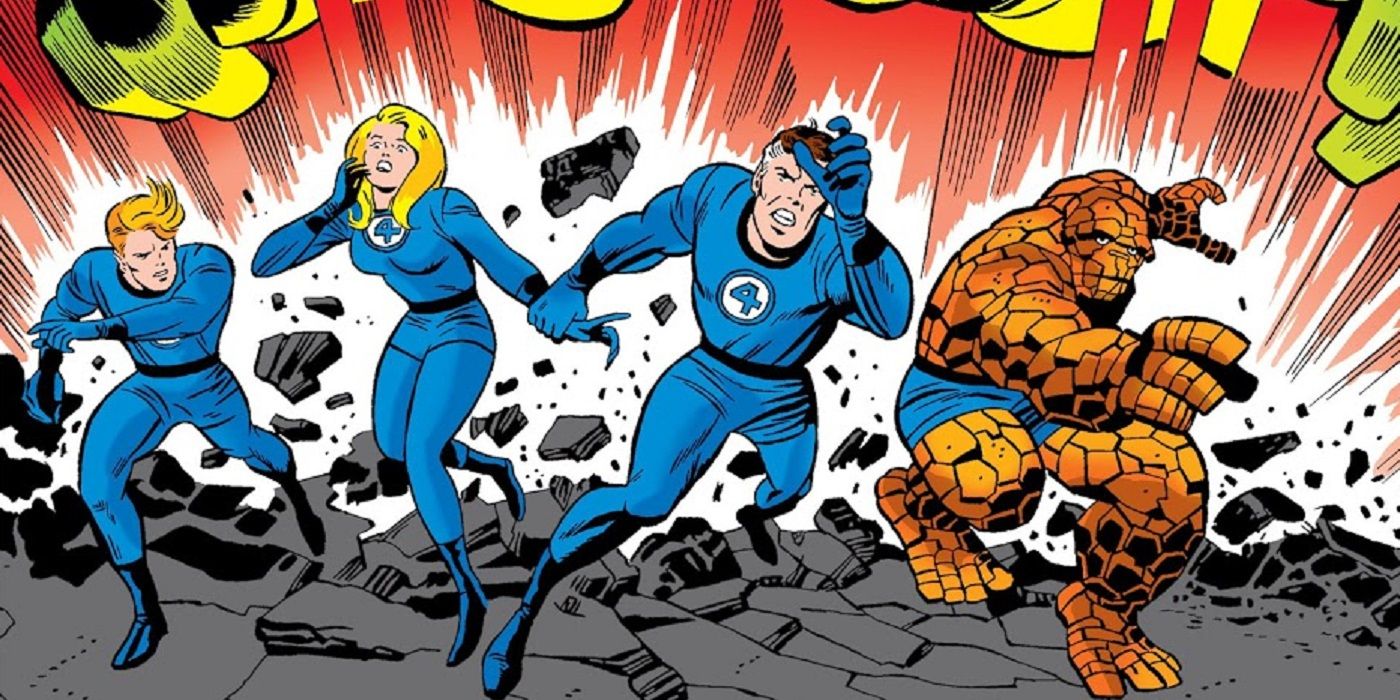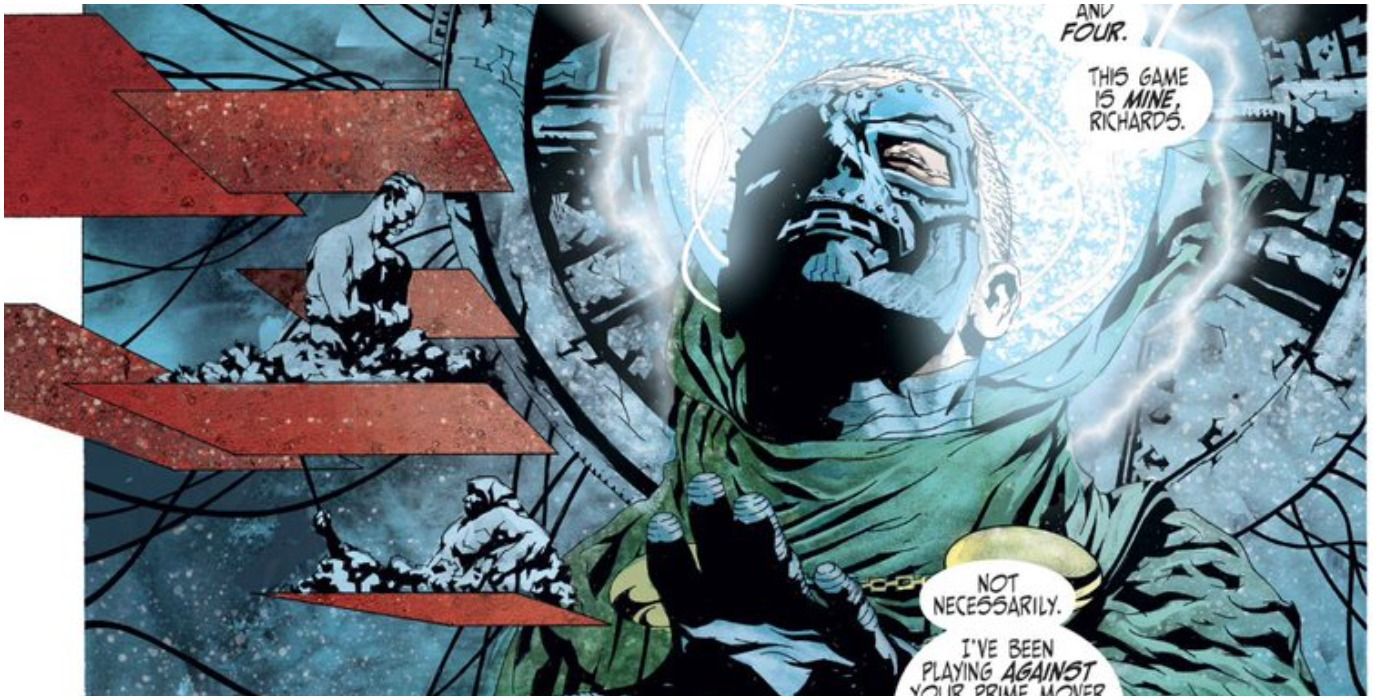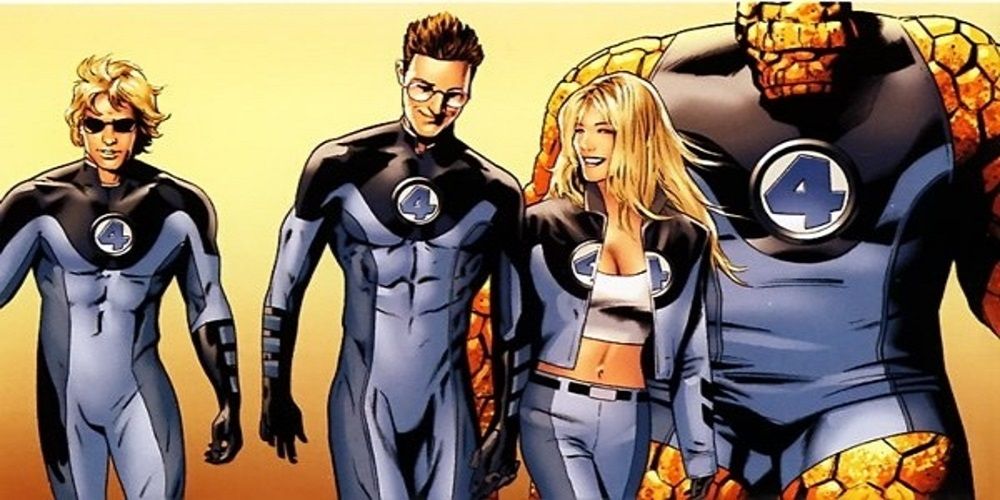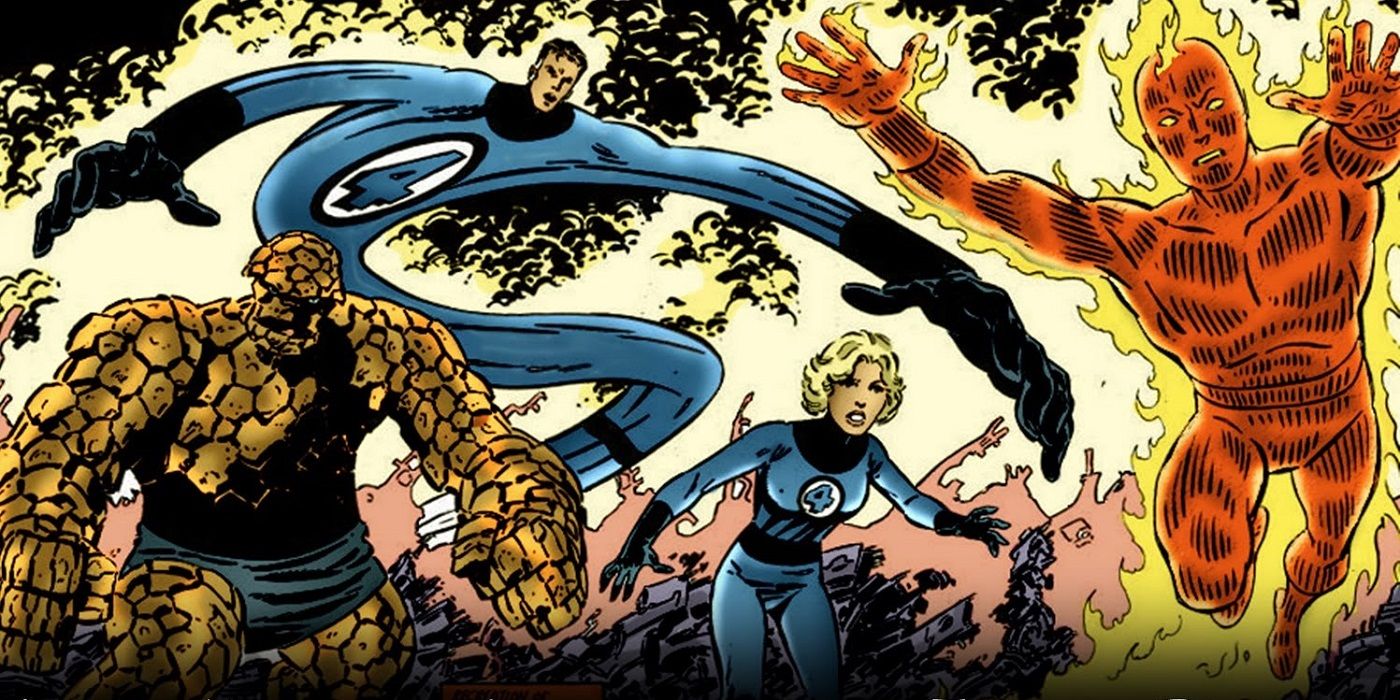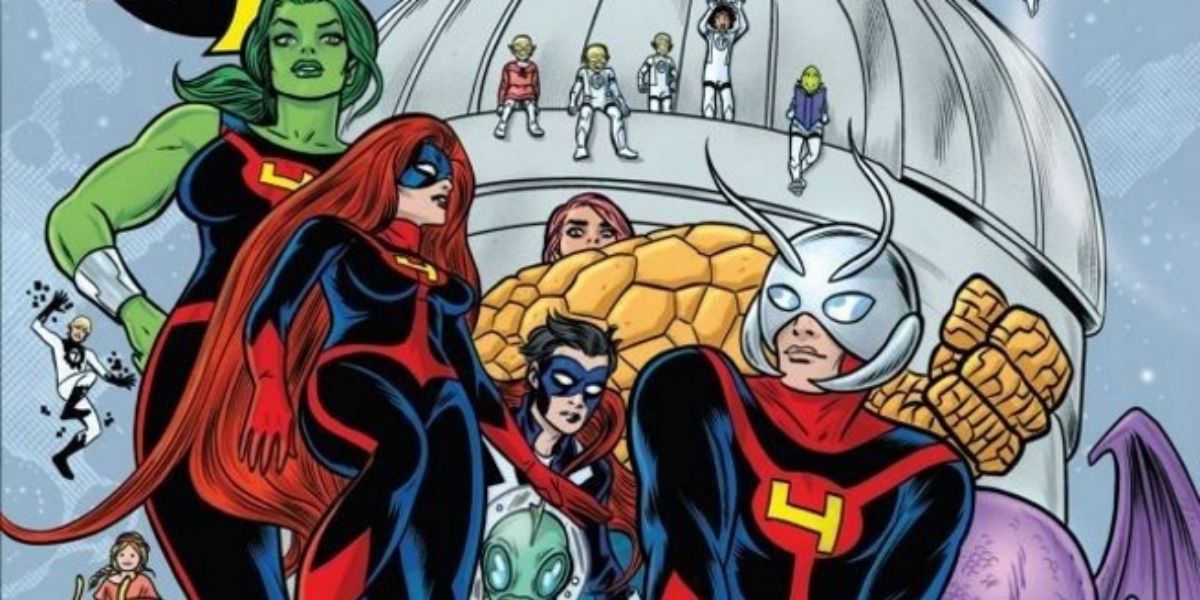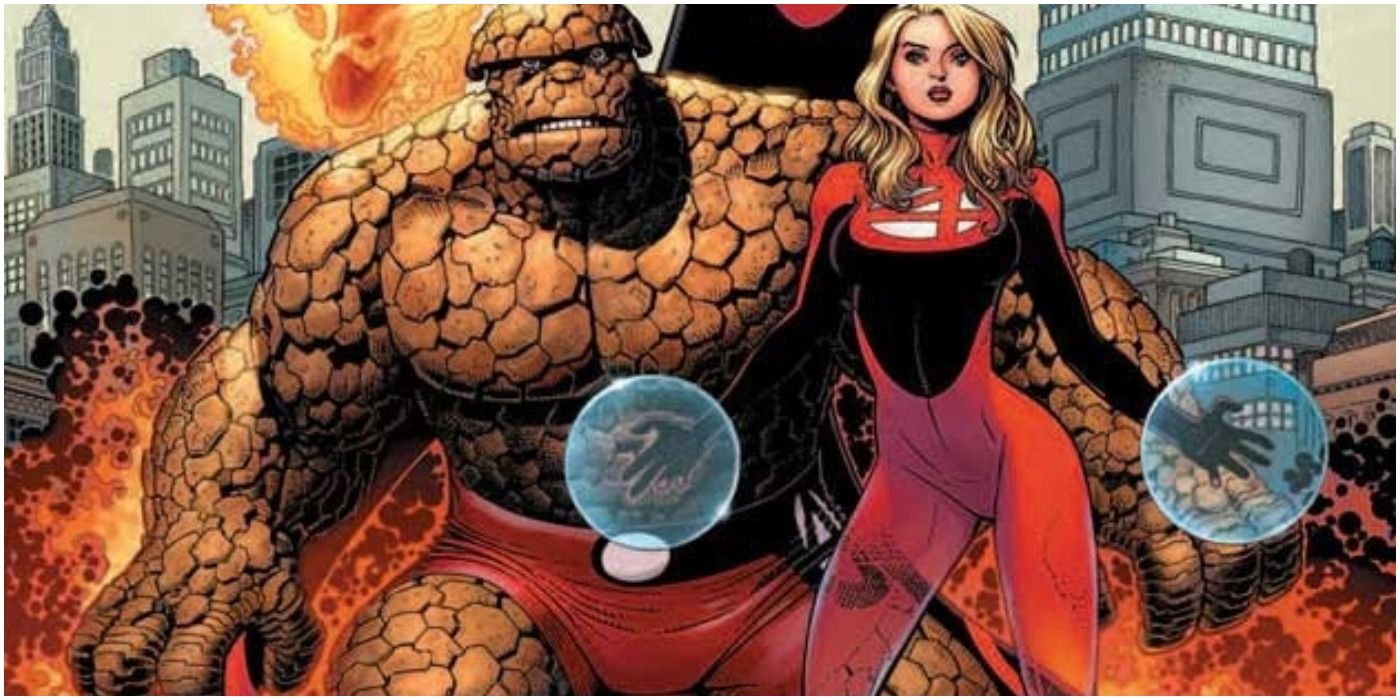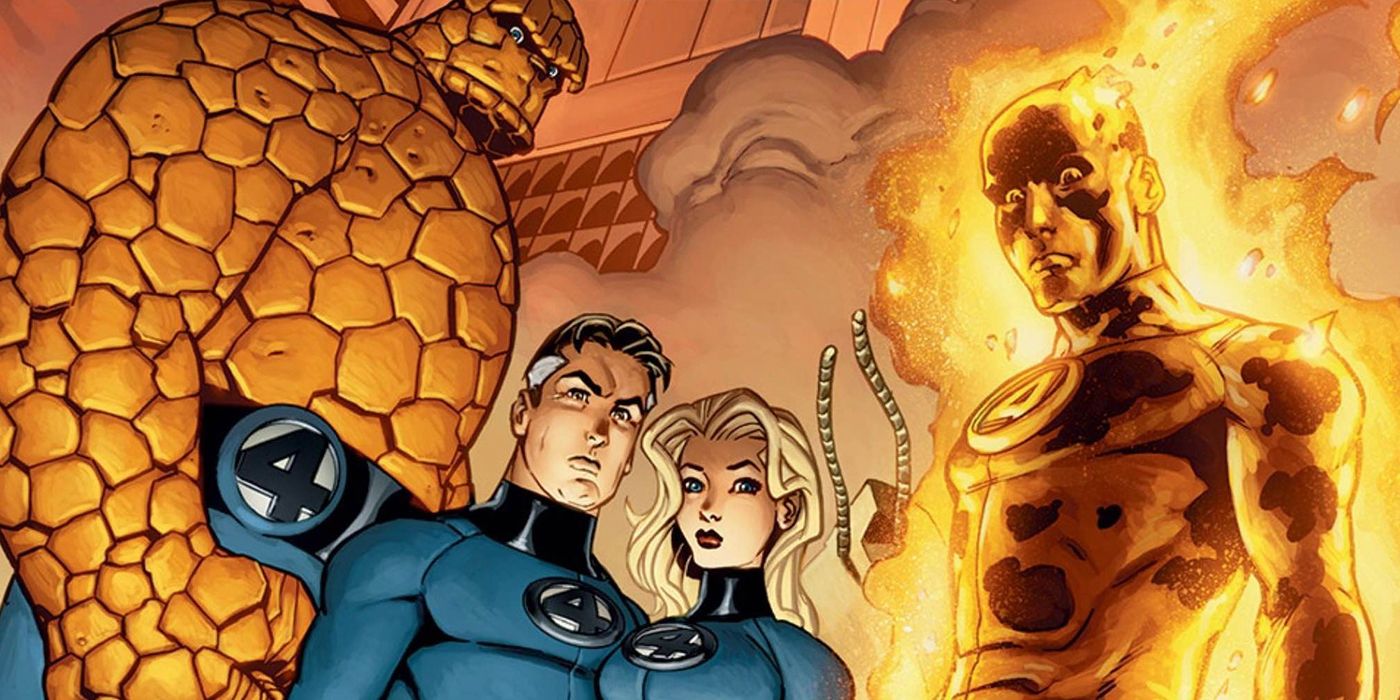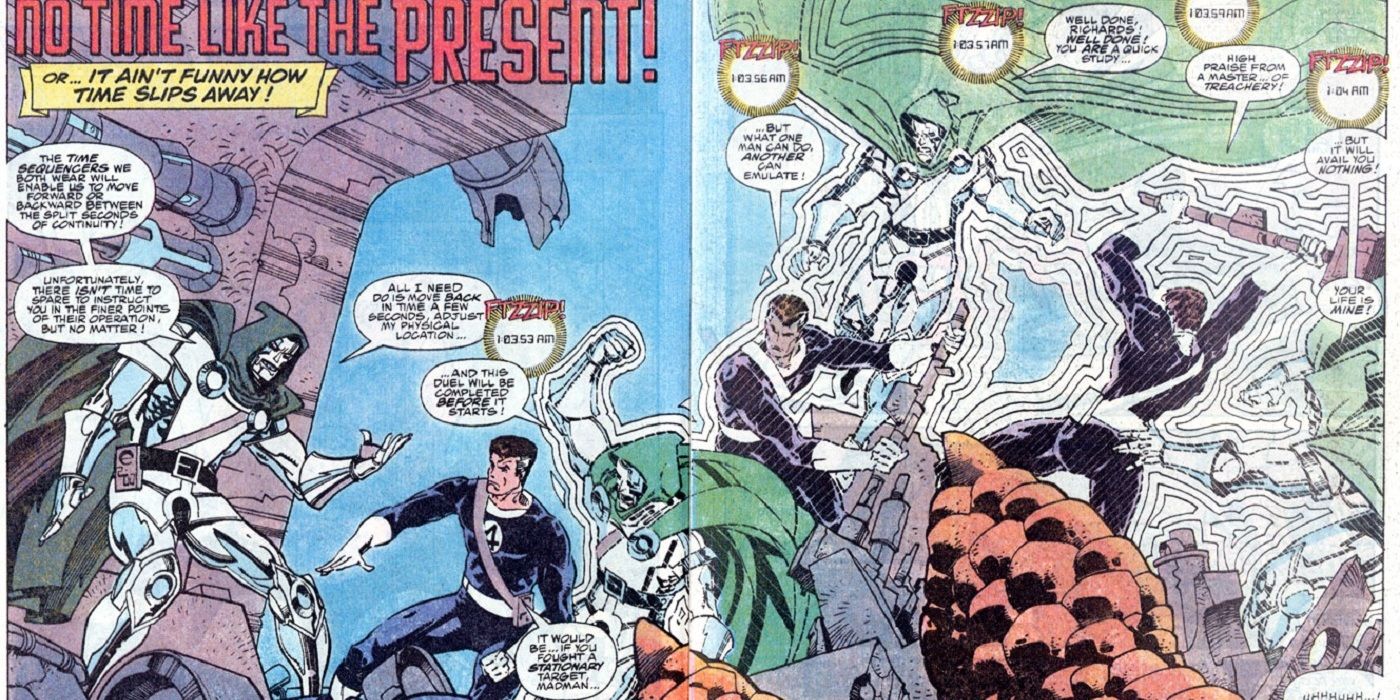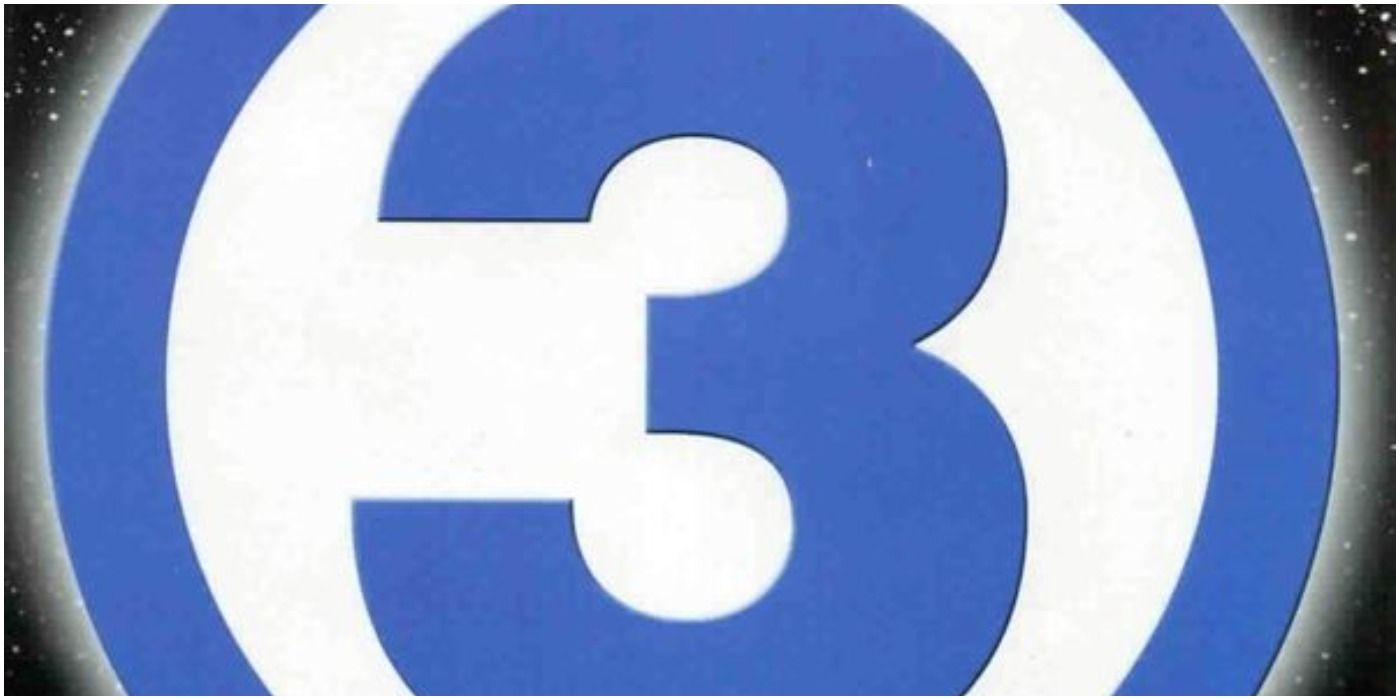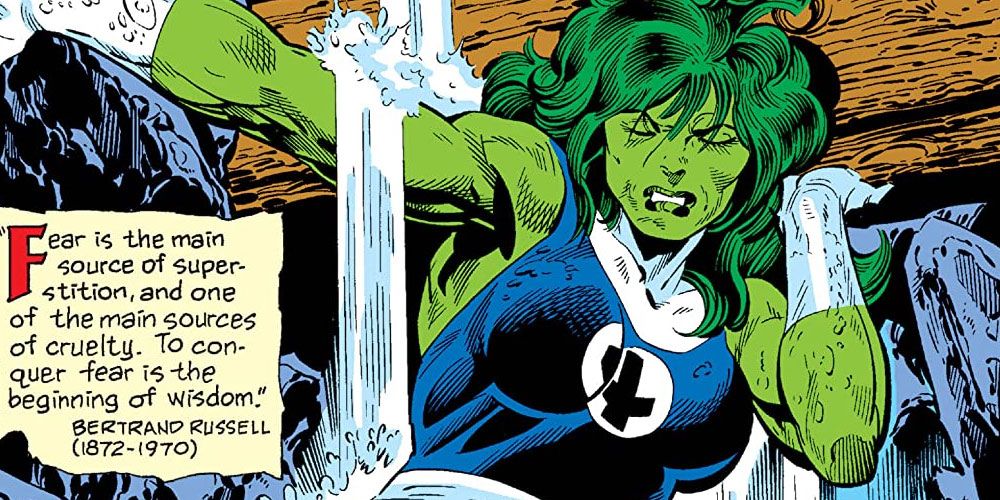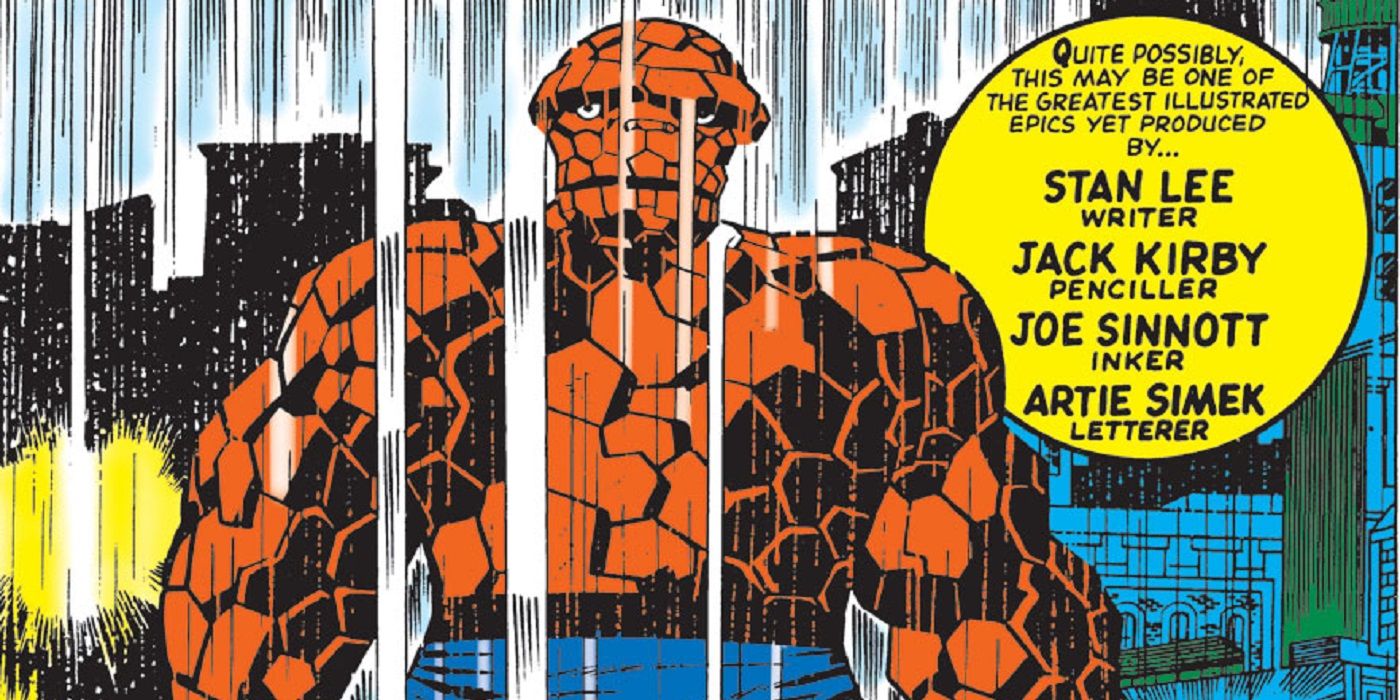The Fantastic Four in many ways defined Marvel history. The iconic team that changed comic books forever was in turn defined by a legendary run by Stan Lee and Jack Kirby that has may have been surpassed in terms of length but never really in measure. But the First Family has been the focus of many great runs in the years after.
Some of the greatest stories involving the Fantastic Four came during runs in the Bronze and Modern Age, redefining the team, reinterpreting them, and often bringing them back to their classic roots. Through it all, every iteration reminds fans of why the Fantastic Four were so great in the first place.
10 Fantastic Four: 1234
Grant Morrison has been at the helm of a number of great modern interpretations of some of the greatest comic book icons ever, like All-Star Superman, a story that has aged well. Jae Lee provided his signature art style heavy on inks for Fantastic Four: 1234, which provided a very different take on the team. Morrison avoids the temptation of revising or retelling the team's origin, instead coming at them from another angle that explores themes and tropes that Morrison established in his earlier equally well-aged masterpiece, The Invisibles.
9 Ultimate Fantastic Four
Ultimate Fantastic Four absolutely did put a modern spin on the team. That was the entire point of the Ultimate Universe, which sought to loosen classic Marvel characters from the tethers of their continuity. Mark Millar made the team a lot younger and emphasized the science more than it had been before. Classic stories and characters like Galactus were reinterpreted, though, in the end, it seemed the effort only amplified the success of the original stories. Fans generally soured on this run the longer it went.
8 Unstable Molecules
Unstable Molecules, a four-issue mini-series from James Sturm and Guy Davis, is perhaps the most adventurous take on the Fantastic Four. It's also one of the most subdued. The 2003 series reimagines the four members of the team as people living in the real world, with Reed Richards a scientist so engrossed in his own work that he lets his girlfriend, Sue Storm, slip through his fingers. No cosmic battles or time travel occurs. Instead, it's sort of the FF filtered through Mad Men in a story that digs down deep into their characters.
7 FF
Another inventive take on the team came from the minds of Matt Fraction and Mike Allred. FF, short for Future Foundation, was a radically different interpretation of the team that featured new members like Ant-Man (in one of his best costumes) as well as perennial Fantastic Four member She-Hulk.
The Future Foundation was an outgrowth of Mr. Fantastic's plan to develop the team into a more global and cosmic force for good. Allred's throwback art style contributed to the idea that it was in some ways a return to its 60s roots, while still pushing the concept into the future.
6 James Robinson
James Robinson's run on the Fantastic Four was unfortunately short-lived, but it was one of the more unique modern takes. The 2014 volume of the series launched with a renewed focus on the theme of family. The book became a victim of the strife between Marvel Studios and Fox once the latter committed to making a new - and poorly received - Fantastic Four movie. All things FF went into hibernation at Marvel in 2015, only returning recently as the movie rights were sorted out with the Disney purchase of Fox.
5 Inside Out
The Mark Waid and Mike Wieringo run on Fantastic Four in the early 2000s brought the team back to creative prominence after several years in the proverbial desert. The book had been rebooted a few years before during the Heroes Reborn initiative, perhaps one of the worst moments of the 1990s. The Fantastic Four under Waid returned to their fun, adventure-based roots, but lackluster sales led to Marvel editorial letting the creative team go. Fan outcry brought them back to complete their epic run.
4 Into The Time Stream
Walt Simonson is well known for his epic run on Thor in the 80s, during which he introduced some of the coolest versions of Thor ever. After his run on the Avengers came to an abrupt stop because he couldn't let Reed Richards and Sue Storm join as promised, he moved over to the Fantastic Four. His run on the book saw the team expand their cosmic and dimensional scope in a big way, taking on successive versions of Kang The Conqueror and using the Ultimate Nullifier for the first time.
3 Three
Johnathan Hickman, currently the architect of the Dawn of X revival of the X-Men, had a celebrated run on the Fantastic Four that began properly in 2011. Hickman built on Waid's concept of the family of space and time explorers but pushed it even further. His interest in science led to a much more tech and concept heavy run.
The run is also notable for the apparent death of the Human Torch during the Three storyline. This had major ramifications on the team, leading into the Future Foundation era.
2 The Negative Zone
John Byrne, one of the greatest X-Men artists of the '80s, took over the Fantastic Four in the mid-80s. He revitalized the team, which had become somewhat stagnant in the Bronze Age. He introduced a horde of new concepts and new team members, including the ever-changing She-Hulk. Byrne wrote, penciled, and inked the series, allowing his imagination to run free. The team entered the Negative Zone (getting inverse costumes as a result) and faced off against Ego the Living Planet.
1 This Man, This Monster
Stan Lee and Jack Kirby collaborated on 101 consecutive issues of the Fantastic Four, spanning the entire Silver Age. Their work on the title not only defined the team for all time but comics ever since. So many iconic stories emerged from this period it's difficult to single out one. "The Galactus Trilogy" alone stands head and shoulders above most comics, but the pathos of "This Man, This Monster" showed what made the Fantastic Four so special and unique. They were superheroes, but they were human beings, too.

